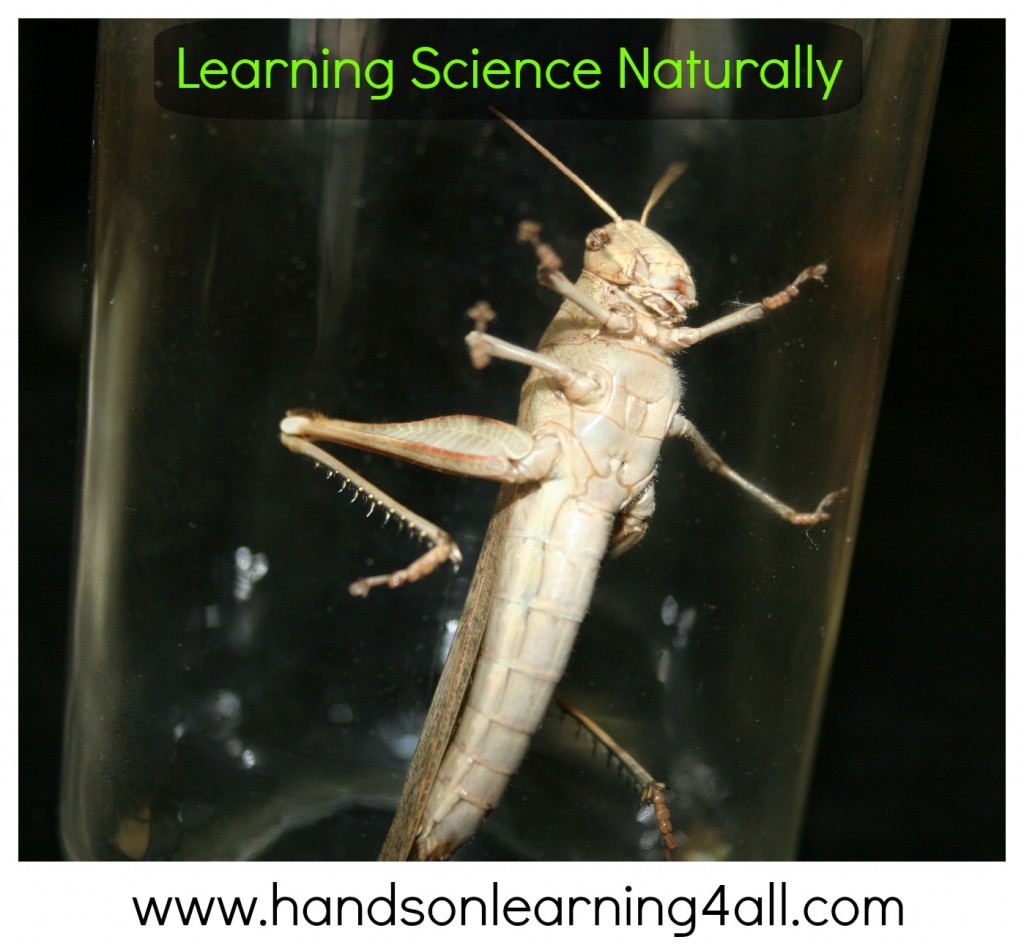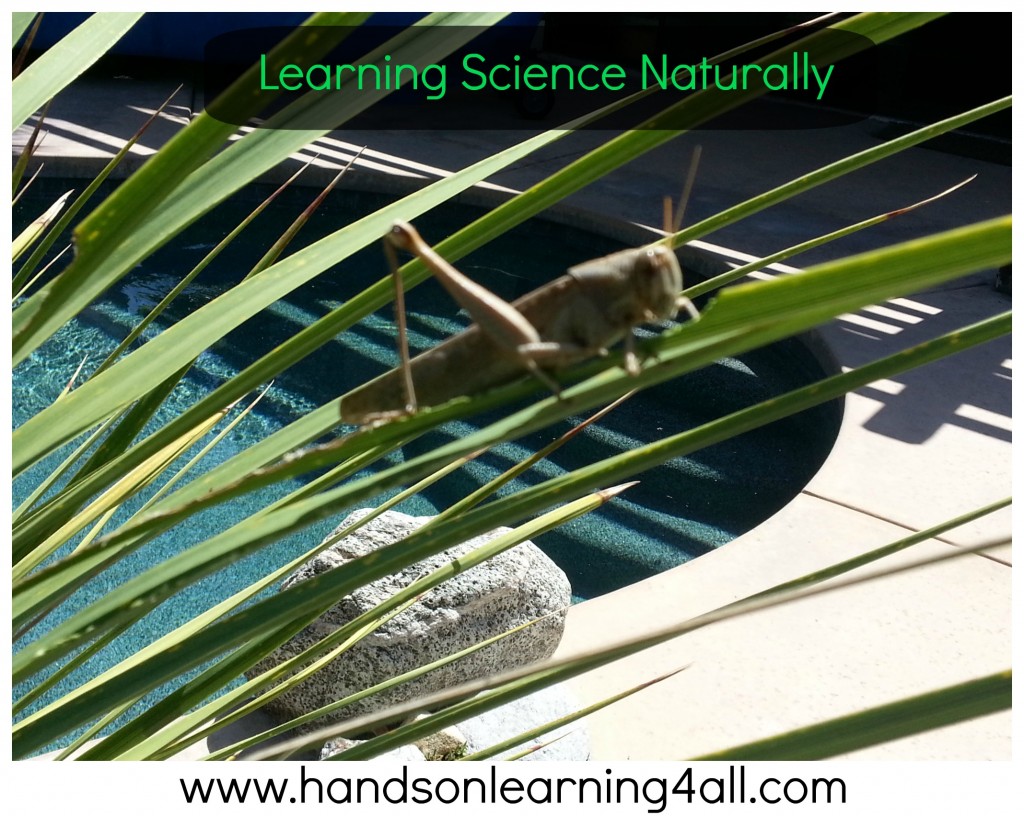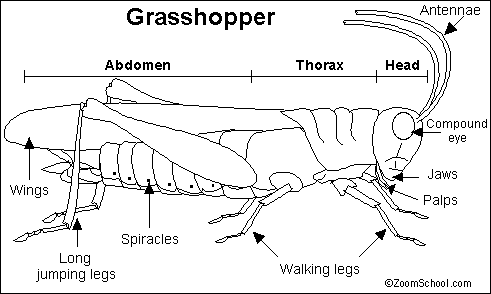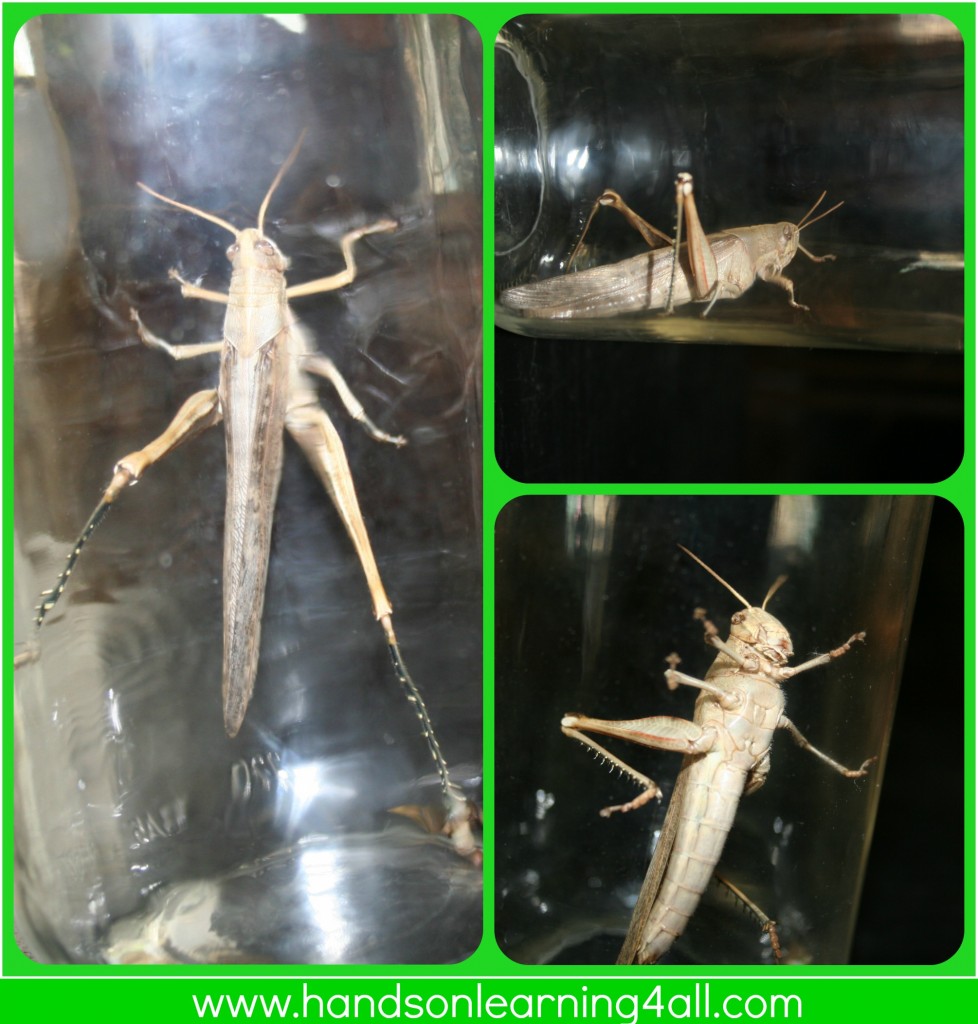We took home-school outside today because the weather was so beautiful! As we sat at our outdoor table with our books and we completed a lesson in science, it occurred to me that SCIENCE was all around us. So we did some exploring and found this little guy! My daughter named him Tom!
We got out our science journals and took some observation notes about ‘TOM’ in his natural environment. He was happily munching on these tree leaves and we were able to see him using his mandible and palps. We took note of his antenna and how they moved around while he was eating. We decided we wanted a closer look so we carefully captured TOM (the grasshopper) in a glass jar and put the lid on loosely. Then we got our magnifying glasses out and did some closer observations.
We could easily see this grasshopper’s exoskeleton and we discussed how it would serve as protection for him. We were fortunate enough to observe him go to the bathroom too! So we talked about what we might see inside of a grasshopper–> A digestive system but NO bones!
We then did a bit of research and were able to name and label his body parts on some pictures that we drew. We also learned some facts about grasshoppers like:
- Grasshoppers can jump 20 times their own length. We measured our grasshopper using a ruler and then calculated the distance that he could jump by doing the multiplication!
- Grasshoppers can live on every continent except for at the poles. We took out our globe and named all of the continents that grasshoppers could live on.
- There are more than 18,000 different species of grasshoppers. We looked at some pictures of various species online.
- Grasshoppers are herbivores and only eat plants. We drew the conclusion that they could do some real damage to our vegetable garden based on the amount of leaves he had already eaten on the tree where we found him.
- We recalled that the Magic Tree House book, Twister on Tuesday, mentioned the damage that a swarm of grasshoppers could cause to crops and even household items like clothes and sheets.
There were many other observations and discussions that we had based solely on discovering a little grasshopper in our backyard! I encourage you to take science outdoors the next time you get into a learning ‘slump’ and see what you can discover!
Resources:
Below are some of the resources we used for our learning:
*Bug Facts.net: http://www.bugfacts.net/grasshopper.php
*EHow- Interesting Facts-Grasshoppers: http://www.ehow.com/info_8503914_interesting-grasshoppers-kids.html
*Twister on Tuesday: http://amzn.to/1mfIGnm





That is one BIG grasshopper! Easier for studying, definitely. I love those spontaneous learning moments.
Great article I cannot wait to show to my kids!! Thank you! Trish
I home school two boys ages 12 and 14. I think we just may need to go find one. Thank you.